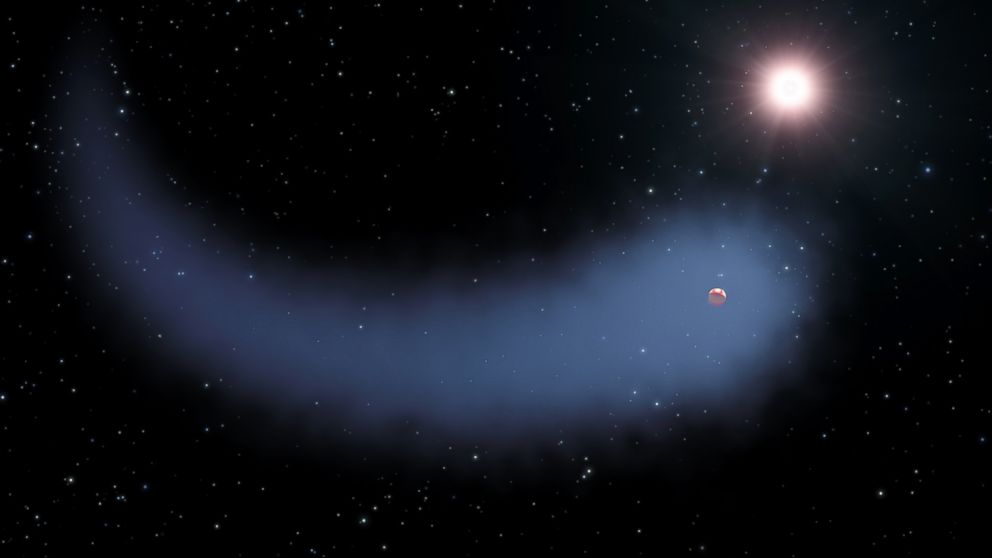Unusual Exoplanet Gives Glimpse of What Earth May Have Looked Like
Hubble Telescope spots a planet with a comet-like tail of gas.

— -- Could this be what Earth looked like in the past?
NASA's Hubble Telescope has spotted a cloud of hydrogen escaping from an exoplanet 30 light-years from Earth at such a rapid rate that the cloud has been dubbed "the behemoth."
"This cloud of hydrogen is very spectacular," David Ehrenreich, lead author of the study published in the journal Nature, said in a statement. "Although the evaporation rate doesn't threaten the planet right now, we know that the star, a faint red dwarf, was more active in the past. This means that the planet's atmosphere evaporated faster during its first billion years of existence."
Like the exoplanet, Earth used to have an abundance of hydrogen in its atmosphere, however it dissipated over the course of 100 million to 500 million years.
Scientists said it's possible Earth may have at one point also had a comet-like tail of gas, similar to the one Hubble detected on the planet known as GJ 436b.
Located less than 2 million miles from its parent red dwarf star, the Neptune-sized exoplanet and is believed to have a mass of 23 Earths. At least 6 billion years old, it's one of the closest known extrasolar planets to Earth.
Vincent Bourrier, co-author of the study, said in a statement the findings also have implications in the search for habitable planets because “hydrogen from the ocean water that evaporate on slightly hotter terrestrial planets than the Earth could be detected."




